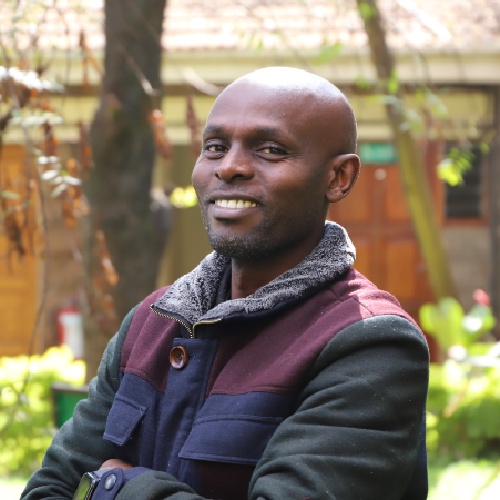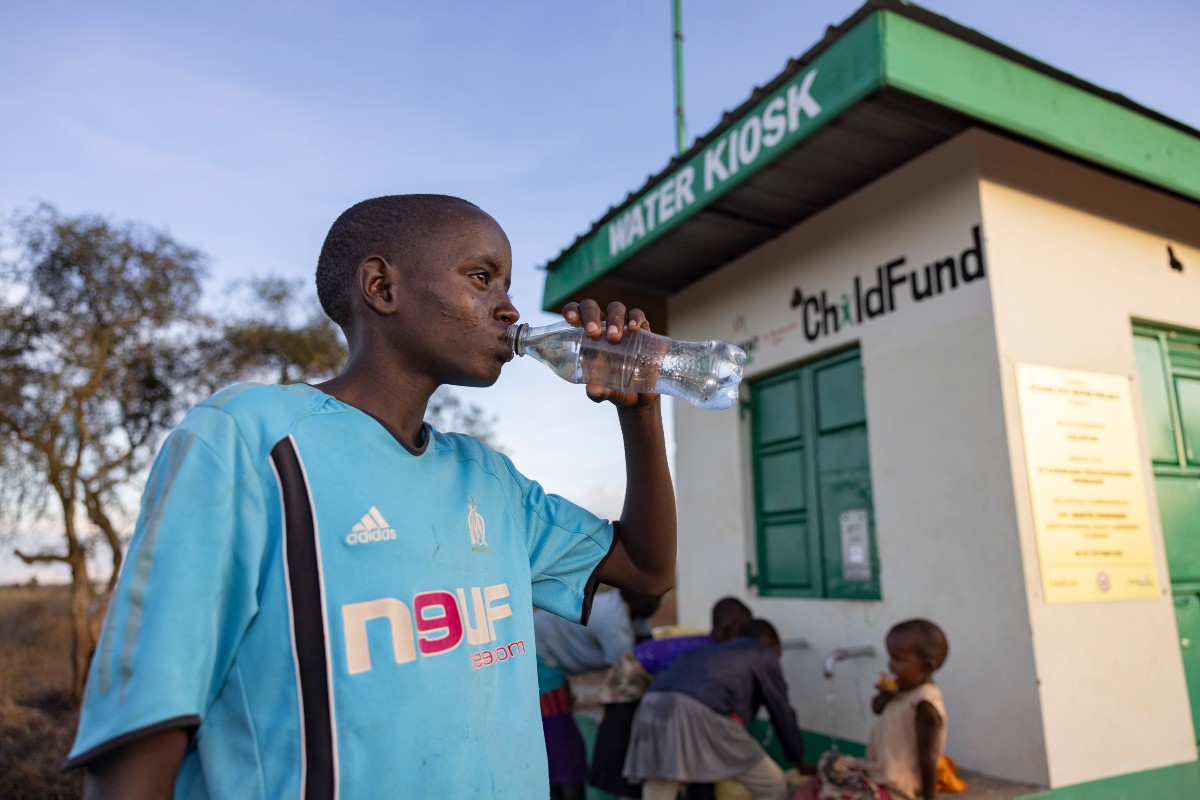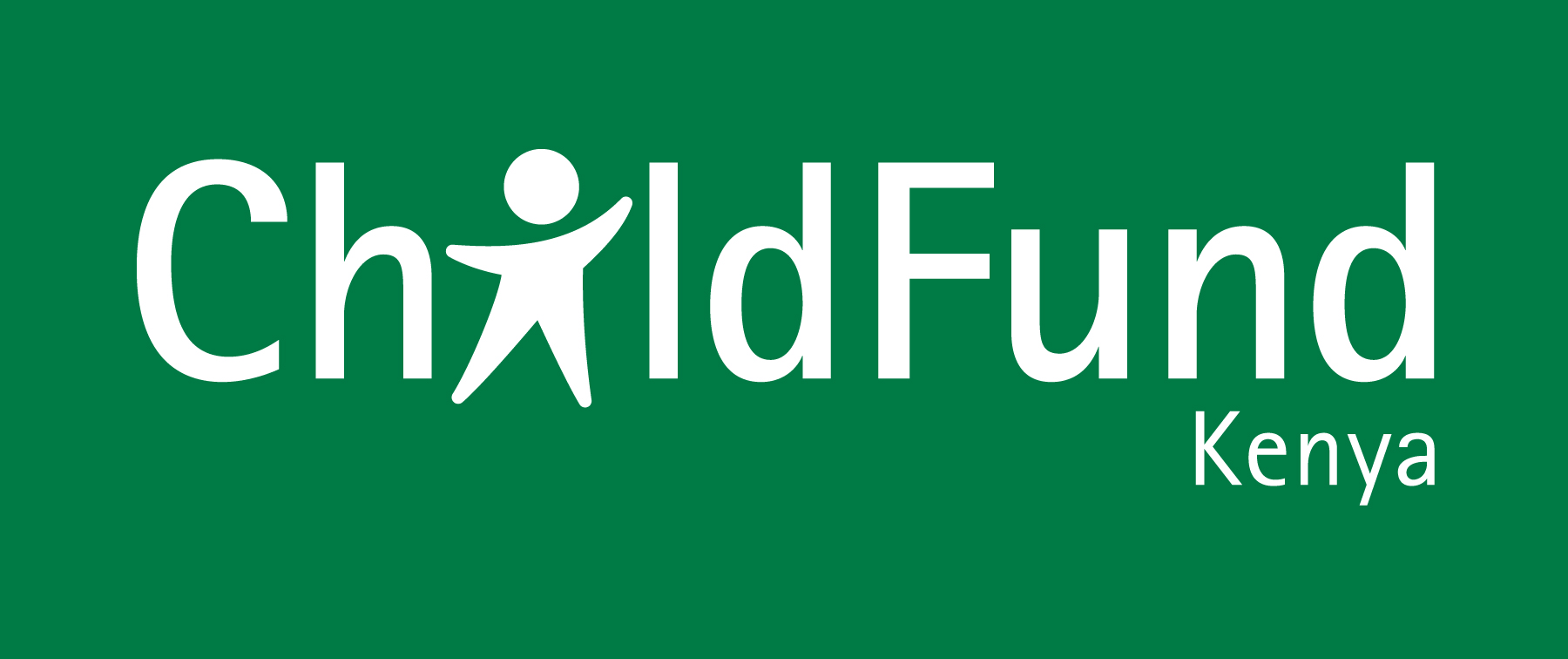
Cyprian Muriuki

Dickson, 14, enjoys clean water from a water point constructed by ChildFund in his village in Kajiado County.
Have Community Participation for Sustainable Development
Kenya recently celebrated 10 years of devolution. The Devolution Conference was themed, 10 Years of Devolution: The Present and the Future, and Sub-theme: Driving Transformation from the Local Level: County Governments as the Centre of Economic Development.
While the conference featured rich discussions on key issues such as sharing and disbursement of revenue, effective service delivery; digitalization; innovation; governance; housing; health; trade and investments, one critical area that was not discussed at length was the issue of meaningful community participation in project implementation. Not just community participation but meaningful.
Having worked with vulnerable communities in Makueni County implementing various community development programs in collaboration with the County Government and witnessed former Governor Prof. Kivutha Kibwana’s way of meaningful participation, my thoughts went back to 2020.
Let me jog your memory. In 2020, when Makueni county was termed as ‘unqualified’ by the Auditor General in 2017/18, other counties rushed to the county perhaps to learn a thing or two on what could have led to such a notable performance by a county which a few years before was at the brink of dissolution.
What was Makueni’s secret? Governor Kibwana had perfected the art of meaningful community participation. The county had established Project Management Committees (PMCs) in each community. The PMCs would propose projects depending on their communities’ needs and ensure this was budgeted for during County planning. Once the project was approved, the community would then be involved in all critical processes such as open tendering, planning, implementation, monitoring, evaluation and even the payment of the contractor. The PMC was so powerful that the contractor’s payment by the county entirely depended on the former’s approval.
Devolution, in practice, means reaching the lowest and smallest possible units at the grassroots level. These are our communities. I look forward to the day when the concept of PMCs, or similar, will be adopted in all 47 counties. As it is often said in Kenya’s political circles, ‘if you are not on the table, then you are on the menu.’ No single community should ever be on the menu.
This meant that the projects had to meet acceptable standards for the community. Any mediocre work went unpaid since the Governor couldn’t approve that which had not been consented to by the community. This ensured community ownership and involvement in decisions that affected them, and that any failure was of their own doing. Prof.Kivutha called this ‘People’s leadership’. Meaningful community participation is more than a public baraza and appending signatures on documents without understanding their contents.
Chapter One, Section 174 (d) of the constitution recognizes the right of communities to manage their own affairs and to further their development. It was intentionally crafted to create sustainable development for communities.
To initiate, implement, manage, and effectively sustain community projects it’s imperative that the participants of such projects be involved in the entire project cycle. Research from the University of Nairobi (2021) indicates that 67% of community projects that were sustainable attributed their sustainability to the involvement of community-based structures to drive such projects.
This is the right and respectful thing to do. After all, communities have always had their own structures and systems that ensured people lived amicably with each other. It does not matter what kind of expertise you possess, failing to involve communities and acknowledge their resources and strengths, is setting up your intervention for failure. When everyone is involved, failures are owned and resolved, successes are celebrated, and achievements stand to benefit everyone for generations to come, including children and youth, whose voices are quite often ignored.
Initiatives such as the Children County Devolution Conference which help to amplify children’s voices and influence budgeting for children at the county level are laudable. Another example is the use of Community-Based Child Protection Mechanisms to end cases of violence and abuse against children. This initiative, rolled out by ChildFund in 27 counties, identifies informal structures that exist in communities, strengthens and facilitates such structures, so that they can take the lead, in collaboration with formal structures, in addressing some child protection issues like out-of-school Children, and are given technical support so that they can direct sensitive child protection issues to the formal government structures. Thanks to such community structures, worrying cases are identified early and directed to relevant government authorities for action. This has seen a decrease in cases of violence against children and improved awareness of child protection from 54% in 2018 to 92% in 2023, according to ChildFund’s annual survey in 27 counties.
Meaningful community participation is more than a public baraza and appending signatures on documents without understanding their contents.
This article was originally published by the Daily Nation.




